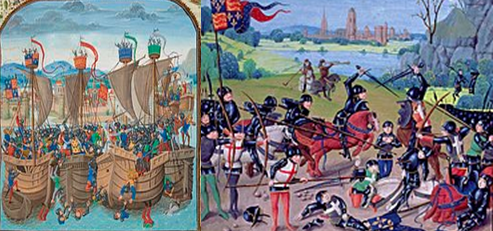Major Causes of the Hundred Years’ War (1337-1453)
The straightforward answer to the question: what caused the Hundred Years’ War would simply be the conflict between Edward III of England and Philip VI of France over the throne of France. Although it is hundred percent true that was a major reason, there were other very serious reasons why those two medieval kingdoms became sworn enemies for 116 years. Thus, the causes of the Hundred Years’ War were multifaceted; below we present 7 major causes of the war as well as why it prolonged:
The French Salic law that forbade matrilineal succession

On his way to becoming king of France, Philip VI received enormous support from many French barons and prelates.
A few decades before the death of Charles IV of France, the French Assembly and noblemen passed a law that not only forbade women from succeeding their father to become kings, but also banned matrilineal succession (the French Salic law). Upon the death of Charles IV of France in 1328, the French Estates General ignored the female line of Charles IV’s sister Isabella of France. The French noblemen went ahead and crowned Charles IV’s patrilineal cousin Philip, Count of Valois, Philip VI of France at the Cathedral of Reims on May 29, 1328. Per French laws, Isabella of France’s son Edward III of England did not have claim to the French throne.
Edward III’s refusal to pay homage to Philip VI of France

Edward III as head of the Order of the Garter, drawing c. 1430–40 in the Bruges Garter Book
Since the Norman Conquest of England in the middle of the 11th century CE, English monarchs have owned vast lands in France. By virtue of their possession of those French lands and titles, the English kings were in fact vassal of the French king. That was a quite a tough pill to swallow, as English kings were often reluctant to pay homage to French monarchs. As a result, French kings would often respond by threatening to seize English-owned lands in France. A similar case happened with respect to Edward III and Philip VI. The English monarch was already sore that he had lost out on the French crown; therefore he was opposed to idea of paying homage to Philip VI for the duchy of Aquitaine and Guscony in France.
Philip VI’s support for David II of Scotland
Perhaps to flex his muscle or as means to antagonize Edward III, Philip VI lent tremendous amount of political and economic support to David II of Scotland, one of Edward III’s greatest mortal enemies. For many years Scottish kings were an absolute thorn in the flesh of English monarchs. Therefore, Philip’s continued support of Scotland meant that he was giving his approval for Scotland’s incessant attacks on northern England. That political move of Philip VI definitely did not go down well with England.
Edward III’s taking in of Robert III of Artois
After fleeing France to England, Robert III of Artois was warmly received by Edward III. The English monarch’s refusal to send Robert d’Artois, Lord of conches-en-Ouche, back to France to face alleged charges of forgery meant that the already frosty relationship between Edward and Philip reached a new level.

Edward III as head of the Order of the Garter, drawing c. 1430–40 in the Bruges Garter Book | Image: Statue of Robert d’Artois in Versailles
Philip VI’s seizure of Edward III’s Aquitaine territories in France
What does French king Philip VI do when his extradition request for Robert III of Artois gets turned down? In 1337, the French king confiscates almost all of Edward III’s Aquitaine territories in France. Edward’s possessions in France accounted for a significant portion of his income; therefore, the loss of those possessions dealt Edward a huge financial as well as a political blow. There was no better reason than that for Edward to gather his forces and march on France.
The French simply wanted all English forces removed from France
After close to two centuries, the French monarchs had grown increasingly tired of the complex vassal-monarch relationship that existed in France. Upon becoming king of France, Charles V had a strong desire to drive out all English forces from French land. The fact that his English cousin refused to take the knee before him made matters even worse. Plus Charles eyed all the riches that could come his way by taking Edward’s lands in France. Edward’s Gascony territory was where the bulk of the cotton and grain trade occurred. Gascony also supplied much of the wine that English men and women drank. Therefore, by no means was Gascony an insignicant territory.
Edward III of England had a lot more to gain by attacking France than accepting Philip’s terms
Aside from the fact that he could retake Gascony from Philip, Edward realized that a war with France would augur really well for him among English barons. English kings have long known that messing with the very powerful barons was tantamount to drinking poison. The barons in England were an extremely powerful and wealthy people, in some cases their influence even rivaled the English monarchs.
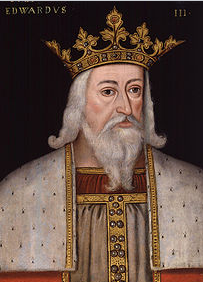
At a ceremony in Ghent on January 1340, Edward III of England declared himself king
By entering into a war with France, Edward hoped to build support from his barons. And proclaiming himself king of France meant that he could go on raids in France under the pretext of trying to claim the French throne, but in actual fact it was all for the riches that the French land offered. Every baron in England was likely to back Edward since they too stood to gain from the war.
All that stood in between Edward and those riches that he sought was the newly crowned French monarch Philip VI. The latter too was also eager to wage war as he too desired to keep all those riches for France.
One must note that there have been wars fought in the Middle Ages for things much less significant than what both monarchs had their eyes on. Therefore the stage was set, and hostilities between the two kingdoms began proper at the Battle of Sluys in 1340, where Edward III secured control of the waterways between England and France. This allowed England to dominate the English Channel for large periods of the war.
Read More: Summary of the Hundred Years’ War
Factors and individuals that kept the war raging on
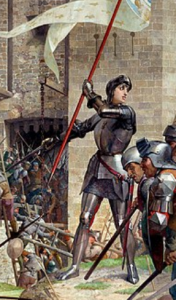
Joan of Arc (1412-1431)
The Hundred Years’ War did indeed last for 116 years. However, what many people get wrong is that England and France did not fight continuously for all those years. That would have been practically impossible. Therefore, the best way to see the Hundred Years’ War is as a collection of discontinuous battles fought between France and England. As we shall see below, peace treaties, arranged marriages, and even the Black Plague were just some of the reasons why the Hundred Years’ War was anything but intermittent.
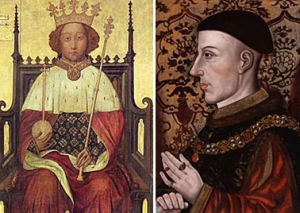
Two English monarchs – Richard II and Henry V – married the daughters of Charles VI of France. In 1396, Richard II married Isabella of Valois, the daughter of Charles VI of France. As part of the 1420 Treaty of Troyes between Charles VI of France and Henry V, the latter married Catherine of Valois, daughter of Charles VI. Image (L-R): English kings Richard II and Henry V
On the flip side, there were some factors and persons (i.e. monarchs and military commanders) that served as a catalyst for the continuation of the war. Below are some examples:
- Charles V of France reign (1364-1380)
Son of John II of France, Charles V is most known for his heroic displays during the Hundred Years’ War. After the death of John II in 1364, Charles defeats Charles II of Navarre at the Battle of Cocherel and then goes on an impressive run of form. He takes the war to the English, recovering many of the lands lost by his predecessors. His domestic reforms definitely augured well for France. By the time Charles departed the throne in 1380, France had the upper hand in the war. Sadly his son and successor Charles VI could not maintain those gains, and England came back on top again.
- Henry V of England’s military campaigns in France that ultimately culminated with a victory at the Battle of Agincourt in 1215.
- Joan of Arc’s effort in raising the moral of French king Charles VII’s troops to end the siege of Orleans, which in turn allowed Charles to be crowned king of France in 1417.
How the two different inheritance laws in France and England caused the Hundred Years’ War
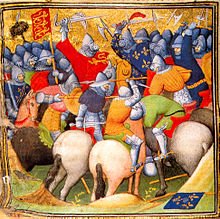
Charles IV of France died in 1328 without a male heir. The situation caused the English royal house of Plantagenet and the French royal House of Valois to lock horns over the throne of France. On the English side was King Edward III, son of Charles IV’s sister Isabella. On the French side was Philip VI, first cousin of Charles IV. Image: – Battle of Crécy, 1346, from the Grandes Chroniques de France. British Library, London
Edward III of England made a legal claim to the French throne through line of descent via his mother, Isabella of France. In the French Salic law, however, titles and property can only be inherited through the paternal line. That meant that only males descended from the sons on the king’s side of the family can inherit the throne, land, or titles.
However, under English law, possession and property can also descend to male children through the maternal bloodline. This means that males descended from the king’s sons or male children descended from the king’s daughters have a claim to the throne.
With Charles IV of France dying without any direct male heir – i.e. without sons or brothers, confusion ensued as to which inheritance law ought to be applied. Edward III was Charles’ nephew through his mother Isabella. That made the English monarch the closest male relative. And so by the proximity of blood hereditary succession, Edward claimed the French throne through his mother’s lineage.
French nobles and assemble vehemently rejected Edward III’s claim. To the French nobility, Isabella did not have the rights in the first place as women could not become rulers of France. Hence Isabella could not transfer something she did not own in the first place.
With enough support, Philip, Count of Valois, was crowned king of France at the Cathedral of Reims on May 29, 1328. Philip was the patrillineal cousin of Charles IV of France. After a few protests, Edward reluctantly accepted Philip’s ascension to the throne. In June 1329, he obliged with a summon from Philip to pay homage for the duchy of Aquitaine and Guscony. As stated earlier, those territories were the property of the English monarch.
